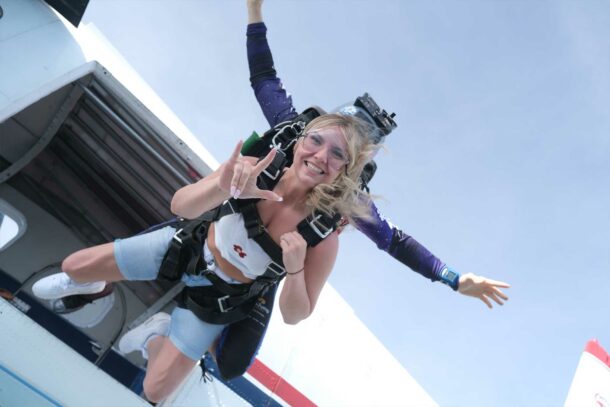Skydiving Competition Disciplines Explained
Thursday, June 15, 2017
There's More Than One Way to Skydive
Did you think that skydiving possibilities were capped at falling belly-to-earth, lightly flying your parachute to the ground, and then packing up to do it again? You’ve never been more wrong! In case you’re wondering, “Is skydiving a competitive sport?” … the answer is yes! Learn more about the unique world of skydiving competitions and different skydiving disciplines!
As weird as this is to say (and while it is a nice thing to occasionally do), solo skydiving with no advancement in skill gets pretty boring after a while. We know, we know, how could skydiving be boring!? Well, while there is absolutely nothing wrong with skydiving in the OG belly way all on your lonesome, the possibilities are endless with what can be achieved with friends while falling through the sky! Let’s jump into the different types of skydiving recognized by the United States Parachute Association (USPA) and what the skydiving competition realm calls for.
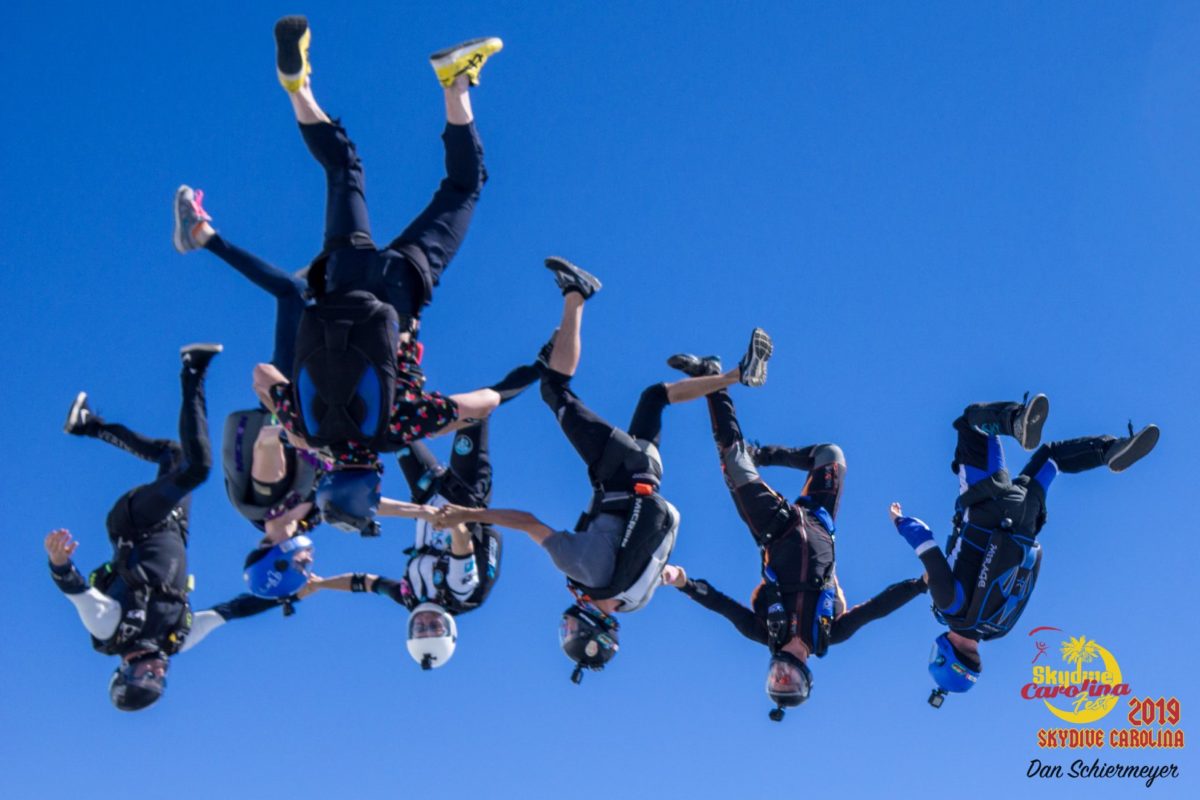
How Do Skydiving Competitions Work?
Skydiving is looked at more as a bucket-list item than an extreme sport! Why? Beats us! Just like any other competition, skydiving competitions are judged by professional and experienced judges based on certain criteria that pertains to each specific discipline. Meaning, the points associated with work done during freefall are different from what’s used to judge canopy work.
Think of it like gymnastics in the Olympics: judges watch for certain compulsory skills – and the extent to which they’re correctly completed – to effectively and accurately determine ranking. Competitions vary in stakes and take place on collegiate, state, national, and even international stages. Whether you’re a newb in the competitive realm or a seasoned veteran who has been competing for years, skydiving has a competition for you!
Types of Skydiving Competitions & Disciplines
1. Formation Skydiving (FS)
- Formation Skydiving (FS – the OG way!): This type of skydiving entails teams of 4, 8, 10, or 16 doing either a predetermined formation or a sequence of different formations. Try to envision lying on your belly with three of your friends holding hands in a circle, now all turn 90 degrees to the right and latch on! This attachment (if completed correctly) would be considered your first “point.” Teams often try to get as many “points” as possible during the allotted time in this skydiving competition.

- Vertical Formation Skydiving (VFS): Now we’re getting spicy. FS is belly-to-earth, yeah? Do the exact same thing but falling with either your head or feet pointed towards the earth – it’s simply (although not simple at all!) formation skydiving with the added challenge of being on a vertical axis.
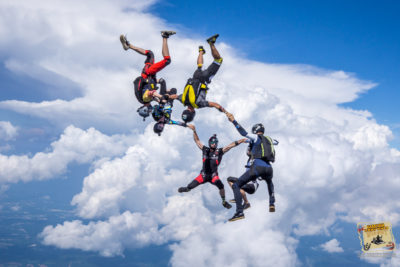
- Mixed Formation Skydiving (MFS): In MFS, teams fly simultaneously in three different orientations: belly-to-earth, vertical head down, and vertical upright. Flying in this manner takes a lot of skill and practice. One of the primary struggles is determining fall rate. Skydivers falling head down or head up naturally fall faster because there’s less surface area. They have to work extra hard to stay with their belly flying counterparts, and vice versa!
*All FS events include a team videographer, which helps the judges with some epic playbacks!
2. Speed Skydiving
- Speed skydiving: It’s exactly as it sounds! If you have the need, the need for speed, then this discipline may be for you. Skydivers orient themselves in a head down position in order to gain the most speed in the quickest amount of time, as this is judged by gaining the most momentum in the allotted amount of altitude. The fastest skydiver wins in this skydiving competition!
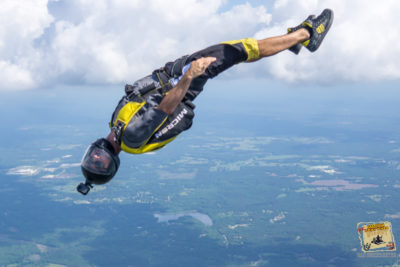
3. Artistic Events
- Freefly (FF): Freeflying is a skill that involves head up, head down, and sitting orientations – think: perfectly stable wall sit but in the sky. This discipline entails two competitors flying with one another with ease and being judged heavily on the fluidity of their routine.
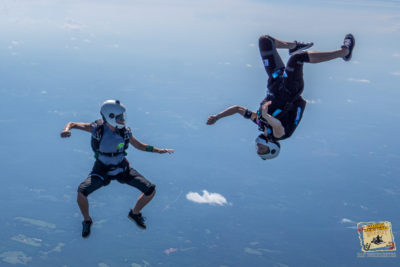
- Freestyle: Freestyle skydiving consists of a two-person team: one flier and one videographer. The flier performs a choreographed routine with superb execution – envision a ballerina leaping and spinning elegantly through the sky.

4. Canopy Work
- Canopy Formations: Skydivers who compete in this category will almost immediately deploy their canopies as they exit the aircraft, all get together, and then link – this can be done by maneuvering their feet onto another jumper’s body, their canopy, or their parachute lines – wild! While groups can have up to a couple of dozen members, for competition purposes they’re limited to 2 or 4.
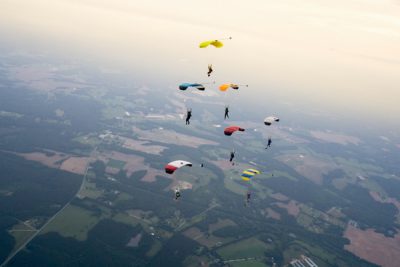
- Canopy Piloting: Skydivers are required to precisely pilot their canopies through a course that takes place over the water (a pond) and land. Judges base their performance on their accuracy, speed, and distance – the swooper trifecta! The course “route” consists of buoys that ensure each canopy pilot runs the same course and therefore, has the same odds.
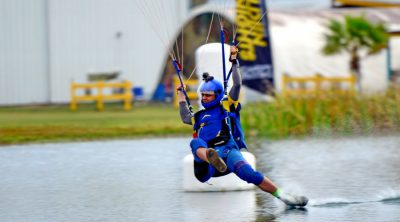
*A pretty nifty and avant-garde addition to canopy piloting is a freestyle option. Essentially, skydivers zoom over the water while doing a predetermined trick, some of them doing full-body 180s and then quickly flip back facing forward before landing – it’s pretty sick! These jumpers are judged on the execution, level of difficulty, and originality of the skill(s).
5. Accuracy
- Although accuracy is partly related to the canopy work section above, it’s so impressive that it deserves its own stand-alone segment. An accuracy competition has individual competitors, or teams of four, that solely attempt to land on a target that is only TWO centimeters in diameter. Yes, TWO! And yes, this is very possible!
6. Wingsuiting
- Wingsuit Performance: This type of flying entails the skydiver competing solo! The jumper will leap from the plane with their wingsuit on and ensue on the task of completing the 1,000-meter vertical course that lies ahead of them. They’re judged on one of these three things (they get one attempt for each round): maximum distance, maximum speed, or maximum time of flight. This data is tracked using a GPS attached to their helmet–super cool.
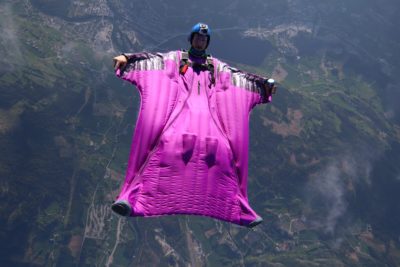
- Wingsuit Acrobatic: With three competitors (including the camera flyer), this type of flying requires the two wingsuiters to show their creative side through freestyle rounds and also stick by the book with the more obligatory rounds. They’re primarily judged on how smooth their transitions with one another are AND on the videographer’s ability to get the shot – lots of pressure for them!
Ready to jump-start your journey of learning to skydive with our AFF course and absolutely crushing some competitions? Book your first jump! We can’t wait to show you how awesome skydiving is!
Related Article: How to Get Into Wingsuiting, A Step-by-Step Guide
Copyright © 2024, Skydive Carolina, All Rights Reserved.
DropZone Web Design & Marketing by Beyond Marketing, LLC





